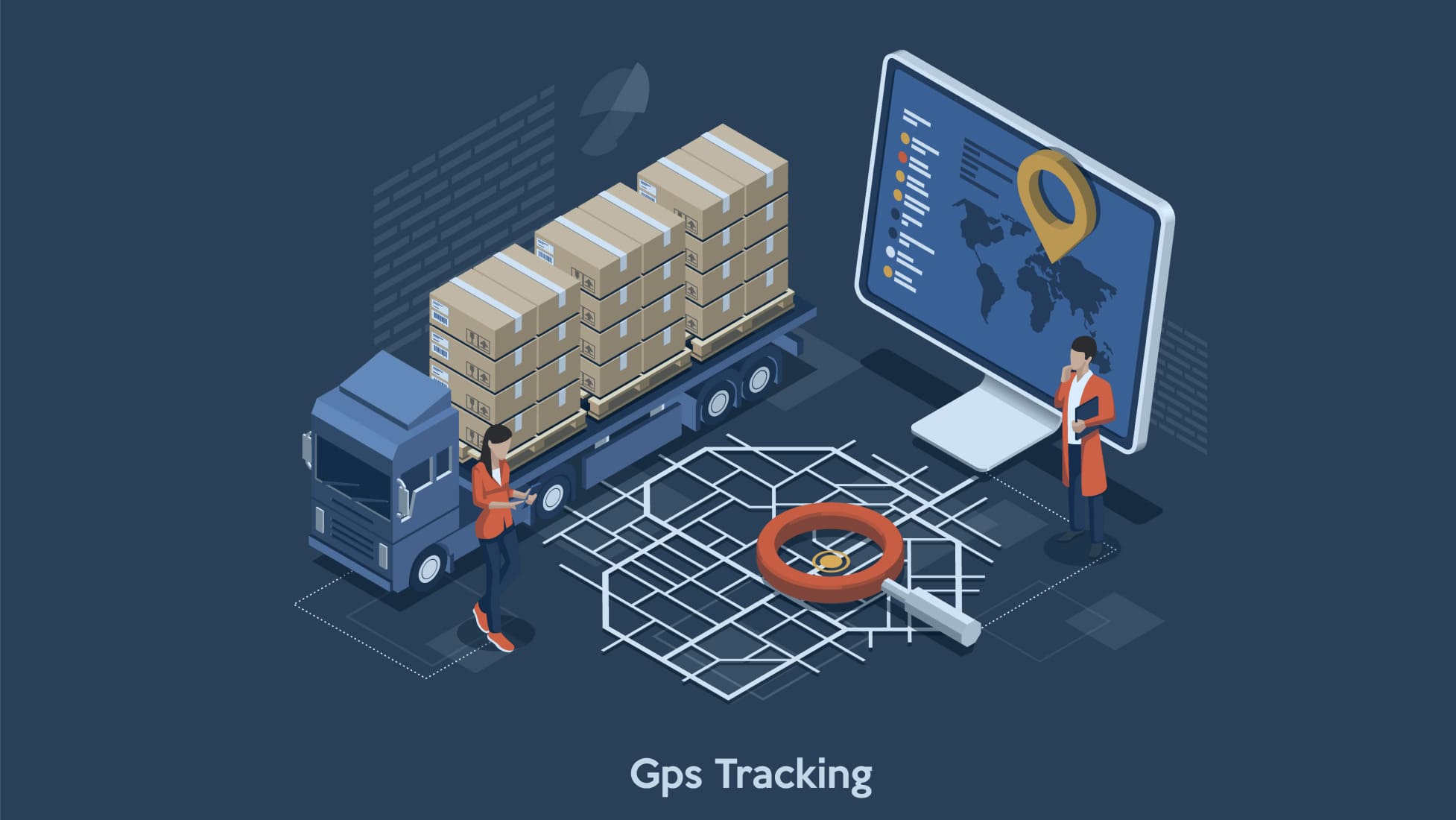In logistics, the clarity and precision with which operations are executed can significantly dictate the overall efficiency and profitability of businesses. Supply chain visibility, or the ability to track and monitor the flow of goods from manufacturer to end-user in real time, has become more than just a luxury—it’s a necessity. In this digital age, delays translate to lost revenue and diminished customer trust. By harnessing the power of logistics and asset tracking the software stands out as a pivotal strategy for success. This technology not only streamlines operations but also ensures transparency across all stages of the supply chain.
Integrating logistics and asset tracking software into advanced fleet management systems elevates this transparency to new heights, offering detailed insights into every asset’s journey. It’s about moving beyond mere tracking; it’s about creating a dynamic, responsive, and fully optimized supply chain. This blog delves into the transformative potential of logistics and asset tracking software. Know how fleet management solutions can enhance supply chain visibility, drive efficiency, and foster a competitive edge in the bustling market landscape.
Understanding Logistics and Asset Tracking Software
Logistics and asset tracking software is a sophisticated tool designed to monitor, manage, and maintain visibility over goods and vehicles throughout the supply chain. This technology provides real-time data on the whereabouts and status of assets. It allows businesses to maintain a tight grip on their operations. When integrated with advanced fleet management systems, this software becomes even more powerful. It offers features like route optimization, automated maintenance alerts, and detailed performance analytics.
The beauty of logistics and asset tracking software lies in its ability to bring a new level of transparency and control to supply chains. By offering real-time updates and comprehensive data analysis, businesses can anticipate problems before they occur, streamline their operations, and deliver unparalleled service to their customers. This section will unpack how logistics and asset tracking software functions, highlighting its role in reinforcing supply chains and its integration with advanced fleet management systems to facilitate a seamless, efficient logistics operation.
What is Logistics and Asset Tracking Software?
Logistics and asset tracking software is an innovative digital solution tailored for monitoring, managing, and optimizing the movement of goods and assets within a supply chain. This technology encompasses a range of functionalities designed to provide real-time visibility and control over various aspects of logistics operations, from warehousing and inventory management to transportation and delivery.
Its Use in the Industry
The use of logistics and asset tracking software in the industry marks a significant leap towards operational excellence and customer satisfaction. Here are several key applications:
Enhanced Operational Efficiency
By providing real-time data on asset location and status, this software allows businesses to streamline their operations, reduce idle time, and optimize routes. This not only improves the speed and reliability of deliveries but also contributes to significant cost savings on fuel, maintenance, and labor.
Improved Inventory Management
With detailed tracking capabilities, businesses can maintain accurate inventory levels, reducing overstock and understock situations. This leads to more efficient use of warehouse space and resources, ensuring that products are available when and where they’re needed.
Risk Mitigation
Logistics and asset tracking software plays a crucial role in mitigating risks associated with theft, loss, and damage. Real-time alerts and tracking enable quick response to any discrepancies or anomalies, securing the supply chain against potential disruptions.
Data-Driven Decision Making
The wealth of data generated by logistics and asset tracking systems offers invaluable insights for strategic decision-making. Businesses can analyze performance metrics, identify trends, and make informed choices to enhance operational effectiveness and customer service.
Enhanced Customer Satisfaction
The transparency afforded by real-time tracking means customers can receive accurate, up-to-the-minute information about their orders. This level of service not only enhances customer satisfaction but also fosters loyalty and trust in the brand.
Benefits of Enhanced Supply Chain Visibility
The implementation of logistics and asset tracking software heralds a myriad of benefits for businesses seeking to bolster their supply chain visibility. Foremost among these is the capacity for real-time tracking. It offers an instant snapshot of where assets are at any given moment. This immediate access to information can dramatically reduce the instances of lost or delayed shipments. It directly translates to higher customer satisfaction rates and stronger business reputations.
Another significant advantage is the strategic insight that comes from analyzing the data collected by asset tracking systems. Businesses can use this information to refine their operational strategies, identifying inefficiencies and areas for improvement. Whether it’s optimizing routes to reduce fuel consumption and delivery times or adjusting inventory levels to meet demand more accurately, the strategic value of enhanced supply chain visibility is immense.
Through these benefits and more, logistics and asset tracking software stands as a cornerstone technology for modern supply chains. By enabling better decision-making, improving efficiency, and reducing costs, it provides the tools businesses need to thrive in today’s competitive environment.
Key Features of Effective Logistics and Asset Tracking Software
The efficiency and reliability of logistics operations hinge on the capabilities of the underlying technology. Effective logistics and asset tracking software is distinguished by several key features that empower businesses to enhance their supply chain visibility and operational control. Here’s a closer look at these essential features:
Real-time Data Access and Reporting
The cornerstone of any logistics and asset tracking system is its ability to provide real-time updates on the location, condition, and status of assets. This feature ensures that businesses can react swiftly to any changes in their supply chain, making informed decisions on the fly. Moreover, comprehensive reporting tools allow for the analysis of data over time, highlighting trends and areas for improvement.
Integration Capabilities with Existing Systems
Seamless integration with existing systems, such as inventory management and customer relationship management (CRM) software, is crucial. This interoperability facilitates a unified view of all operations, enhancing the accuracy of tracking and efficiency of processes.
Scalability and Flexibility
As businesses grow, their logistics and tracking needs evolve. Effective software must be scalable, able to accommodate increasing volumes of data and more complex supply chain structures. Flexibility in terms of customizable features and modules ensures that the software can adapt to the unique requirements of each business.
User-friendly Interface and Accessibility
A user-friendly interface is essential for ensuring that all team members can utilize the software effectively, regardless of their technical expertise. Accessibility, particularly through mobile applications, enables on-the-go tracking and management, a critical feature for dynamic logistics operations.
These features, when combined, form the backbone of advanced logistics and asset tracking software. It enabling businesses to maintain a competitive edge by optimizing their supply chain operations. Our fleet management solutions embody these characteristics, offering a comprehensive platform for businesses to achieve unparalleled supply chain visibility and efficiency.
Implementing Logistics and Asset Tracking Software
The transition to a new logistics and asset tracking system can be a transformative experience for businesses, paving the way for enhanced supply chain visibility and operational efficiency. However, successful implementation requires a strategic approach, mindful of potential challenges and focused on achieving seamless integration with existing processes. Here are the steps to ensure a smooth implementation:
Steps for Successful Implementation
- Needs Assessment: Begin by evaluating your current supply chain operations to identify specific needs and objectives for the logistics and asset tracking system.
- Vendor Selection: Choose a software provider that offers solutions aligning with your requirements, emphasizing the key features discussed earlier.
- Training and Onboarding: Ensure that all users receive comprehensive training on the new system to maximize its utility and minimize resistance to change.
- Pilot Testing: Implement the software in a controlled environment to identify any issues and make necessary adjustments before full-scale deployment.
- Integration and Deployment: Gradually integrate the software with existing systems, monitoring the process closely to address any challenges that arise.
Overcoming Common Challenges
Implementing new software often entails overcoming hurdles such as user resistance, data migration issues, and system compatibility concerns. A clear communication strategy, emphasizing the benefits of the new system. It can offer robust support during the transition, and can mitigate these challenges.
Case Study
Consider the experience of a mid-sized retail company that implemented our advanced fleet management software. Initially facing challenges with late deliveries and inventory discrepancies, the company witnessed a significant transformation post-implementation. Real-time tracking capabilities and detailed analytics enabled them to optimize routes, reduce delivery times by 25%, and improve inventory accuracy. It results in increased customer satisfaction and reduced operational costs.
Conclusion
Integrating logistics and asset tracking software boosts visibility, efficiency, and competitiveness. Focus on key features and strategic implementation to unlock supply chain potential. Advanced technologies in logistics are crucial for future success, making fleet management solutions essential.



